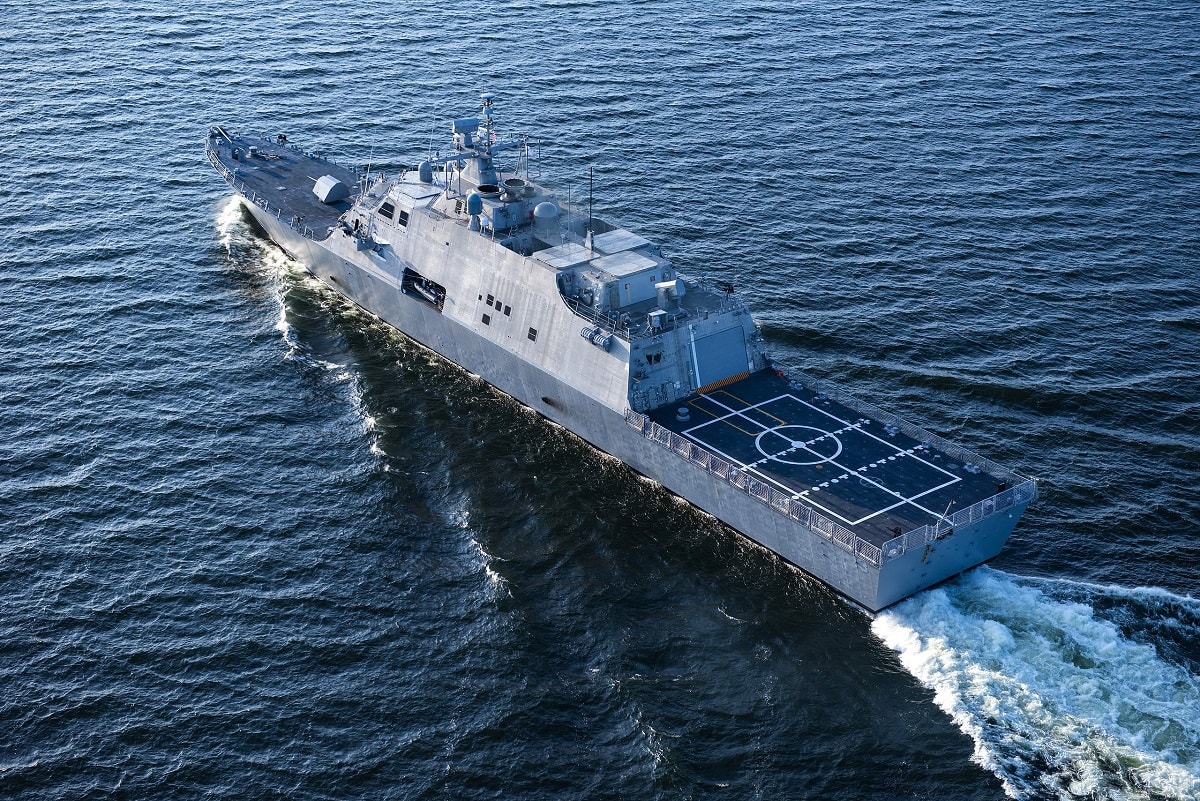Is the Littoral Combat Ship Done? After 9/11, during the wars in Afghanistan and Iraq, the U.S. Navy’s aircraft carriers had an important mission. There were numerous targets to bomb with naval fighter-bombers. Sorties were being conducted around the clock. But the rest of the Navy needed to be gainfully employed. What would the mission be for the various missile frigates and destroyers? The fight had changed from surface fleet ship-on-ship warfare to the battle against terrorism and non-state actors.
Former Defense Secretary Donald Rumsfeld and other war planners envisioned a speedy new vessel that could steam close to shore and help fight terrorists and transnational criminals, plus the ability to clear mines, destroy smaller attack boats, and engage in anti-submarine warfare.
Littoral Combat Ship Answers The Call
The Littoral Combat Ship (LCS) was born. Twenty years ago it made sense to the Department of Defense. Congress agreed and began pouring money into the program. Now the strategic situation has changed and the need for solutions for ship-on-ship warfare plus the use of stand-off missiles and hypersonic weapons has the LCS in limbo. Nine of the Freedom-class LCS are even on a list of ships to be retired. It is a disappointing progression of events for the once vital program.
Mission Re-set Makes the LCS Redundant
Last year, the Navy determined that the undersea warfare mission of the LCS would be reassigned to other vessels. The LCS would have only mine-clearing and surface warfare missions. This reset required fewer littoral ships.
Now, What Is Their Purpose In Life?
The re-alignment is defeating the original selling point of the LCS – that it had “plug and play” modules depending on the mission. But the minesweeping role was never fully developed, and the module idea failed to live up to expectations. The Navy now wants only 21 littoral ships – down from the 50-plus vessels it originally planned to acquire. The ships that the Navy plans to leave in service comprise six Freedom-class vessels for surface warfare and 15 for the mine-sweeping role.
Legislators Have Strong Words Against It
Members of Congress are frustrated, as Politico has pointed out. “We all know what lemon cars are. We have a fleet of lemon LCS ships,” Rep. Jackie Speier of California said during a House Armed Services Committee hearing in June. Speier continued her diatribe. “We have spent billions of dollars on this fleet when they have no capability to help us deal with what our largest threat is, which is that of China and Russia,” she said. “The only winners have been the contractors on which the Navy relies for sustaining these ships.”
Save Money and Re-Invest
Chief of Naval Operations Admiral Michael Gilday believes that retiring the LCS can create cost savings that can be plowed into other ships that better answer the call against Russia and China. This concept is called “divest to invest.” Gilday thinks that the retired littoral ships had maintenance problems and antiquated radar and weapons systems. The LCS also endured issues with its combining gears in the engineering plant.

180711-N-N0101-368.LAKE MICHIGAN (July 11, 2018) The future littoral combat ship USS Wichita (LCS 13) conducts acceptance trials, which are the last significant milestone before a ship is delivered to the Navy. LCS-13 is a fast, agile, focused-mission platform designed for operation in near-shore environments as well as the open-ocean. It is designed to defeat asymmetric threats such as mines, quiet diesel submarines and fast surface craft. (U.S. Navy photo courtesy of Lockheed Martin/Released)
Former Naval Officer Says No So Fast
But retired Navy Captain Tony Parisi disagrees. He is a proponent of the LCS and is convinced the ships have much to offer with their speed, robust armaments, ability to insert special operations forces, and a helicopter launch pad. Parisi, writing for 19FortyFive, in an article originally published in Real Clear Defense, wrote that “If it were a car, as Congresswoman Speier imagined, it would be a cross between a heavily armed Chevy Corvette and a Dodge Ram pickup.”
No Consensus on Navy’s Force Posture
It will be up to other lawmakers on Capitol Hill to decide the fate of the LCS. The Navy needs ships of all stripes at the moment. But cost savings that could be accomplished through the divest to invest idea has intellectual appeal.
The Department of Defense, the White House, and Congress do not currently agree on what the future force of the Navy looks like and while time is wasted on deciding the numbers and types of warships, the enemy keeps pumping out their own combat vessels.
Expert Biography: Serving as 1945’s Defense and National Security Editor, Dr. Brent M. Eastwood is the author of Humans, Machines, and Data: Future Trends in Warfare. He is an Emerging Threats expert and former U.S. Army Infantry officer. You can follow him on Twitter @BMEastwood. He holds a Ph.D. in Political Science and Foreign Policy/ International Relations.

